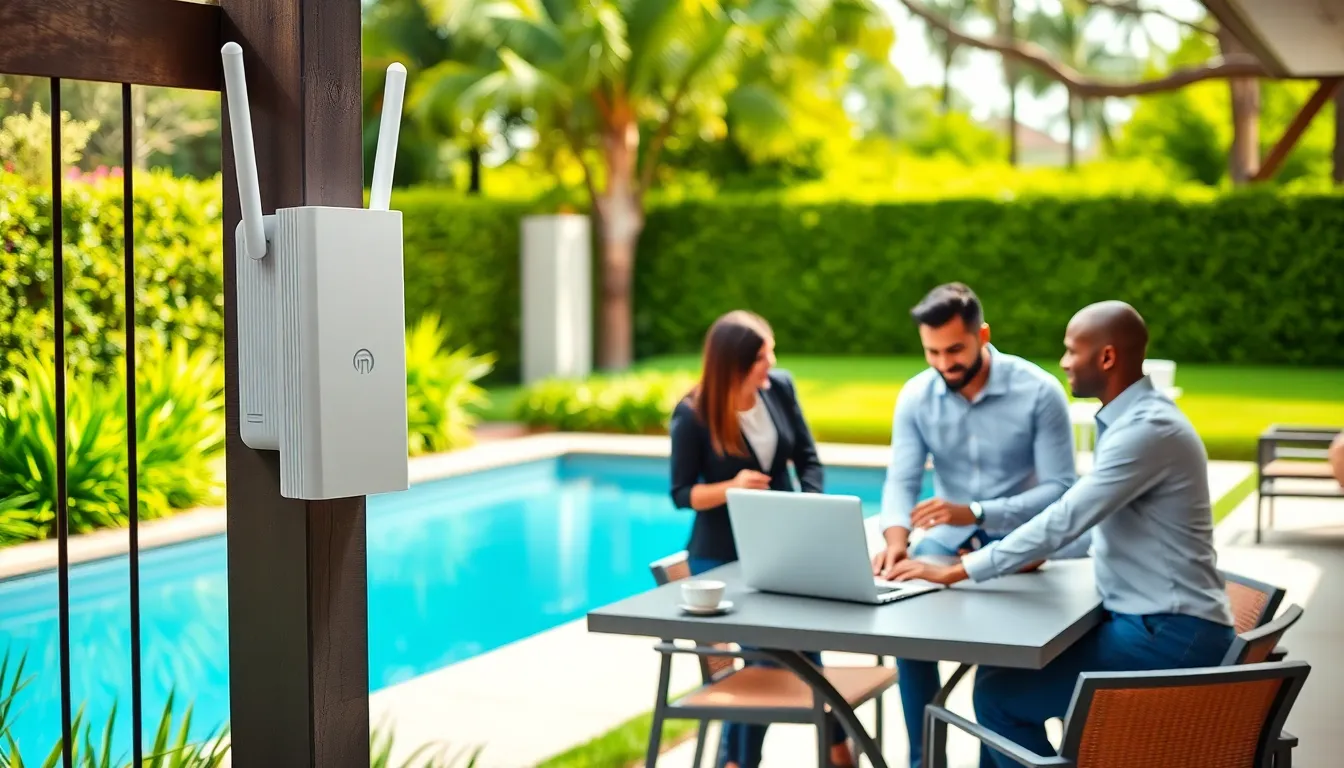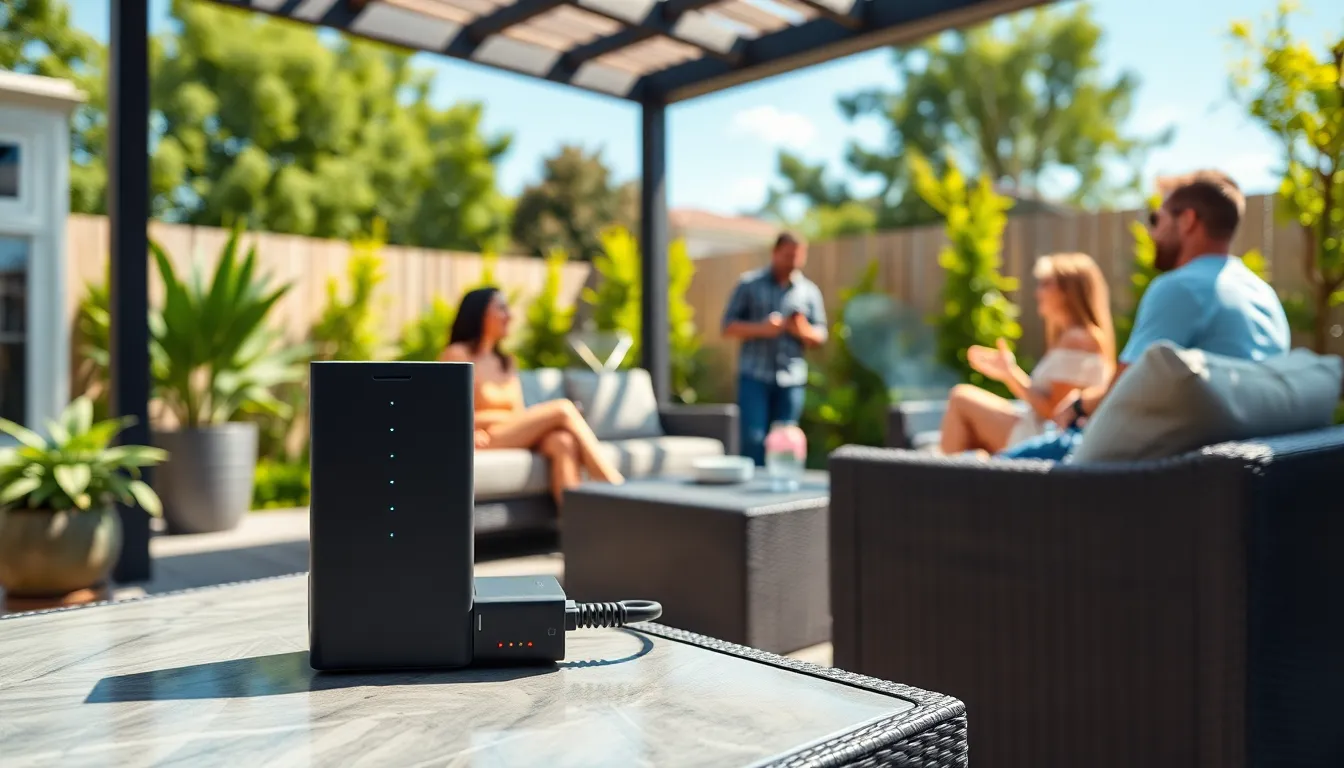Imagine this: it’s a sunny Saturday, and your friends are gathered in the backyard, barbeque grill sizzling, and yet you’re stuck indoors chasing WiFi signals like a modern-day digital scavenger. Fear not. Enter the hero of the day, the outdoor WiFi extender long range. With this magical device, dead zones vanish, and connectivity flows like your favorite summer drink. Let’s jump into everything you need to know about outdoor WiFi extenders, ensuring your outdoor spaces remain connected while keeping your sanity intact.
Outdoor WiFi Extender Long Range

How Outdoor WiFi Extenders Work
Outdoor WiFi extenders capture the signal from your existing router and amplify it, sending it further into your yard. Much like a whistle travels farther than a shout, these devices take your WiFi signal and push it far beyond the standard range limitations of your router. A combination of antennas, high-gain capabilities, and sometimes solar power allows these extenders to function effectively outdoors, even in challenging conditions.
Benefits of Using an Outdoor WiFi Extender
Why bother with an outdoor WiFi extender? Well, the benefits are many. First off, your connectivity can reach that perfect shady spot by the pool or the corner of the garden, ensuring uninterrupted streaming during your outdoor binge-fest. Secondly, gatherings can turn into mini-office hubs, where work and pleasure intertwine seamlessly. Plus, setting up a WiFi extender negates the need to run long cables, saving time, money, and the endless headache of DIY projects gone wrong.
Choosing the Right Outdoor WiFi Extender
Key Features to Consider
When picking the right outdoor WiFi extender, certain features stand out. Wireless standards like 802.11ac or the newer 802.11ax guarantee fast speeds and expansive coverage. Look for weatherproof designs: after all, Mother Nature doesn’t take a day off. Also, a dual-band extender can help eliminate congestion during your Netflix marathons by ensuring devices operate on separate frequencies.
Factors Affecting Long Range Connectivity
Distance, obstacles, and interference play major roles in WiFi performance. Trees, walls, and buildings can disrupt signals. Elevation matters too: installing your extender on higher ground can significantly enhance the connectivity. Another consideration is the frequency band selected: higher frequencies travel shorter distances but offer faster speeds, while lower frequencies extend further but reduce speed.
Installation Tips for Optimal Performance
Setting Up Your Outdoor WiFi Extender
To install your outdoor WiFi extender correctly, first, identify the best location, ideally, somewhere in between your router and the area needing coverage. Ensure it’s plugged into a power source, and use the device’s app or web interface to connect it to your existing WiFi network. Most extenders include a light indicator that signals optimal placement, so don’t hesitate to adjust as necessary.
Troubleshooting Common Issues
Encountering issues? Don’t sweat it. Common problems like slow speeds could be resolved by relocating the extender or updating its firmware. If there’s still a hitch, a quick reboot often resolves many connectivity woes. Always refer to the manufacturer’s troubleshooting guide for specific help.
Maximizing Your Outdoor WiFi Coverage
Best Practices for Signal Strength
To maximize WiFi coverage outdoors, use the extender’s dual-band capability effectively. Devices that require heavy data use, like gaming consoles, should ideally connect to the less crowded 5GHz band. Regularly check for interference, such as nearby microwaves or other electronics, and try to keep the extender away from potential blockages. Small adjustments can lead to significant changes in signal quality.
Maintaining Your Outdoor WiFi Extender
Proper maintenance can prolong the life of your outdoor WiFi extender. Regular firmware updates ensure you’re using the latest technology and security features. Clean the device occasionally to prevent dust buildup, which can hinder performance. Also, periodically reassessing your home network layout can help adapt to changes in usage or new devices.

